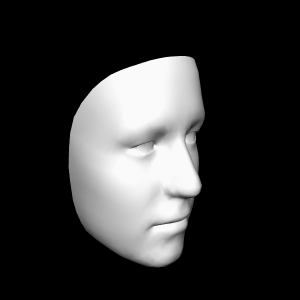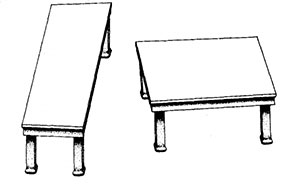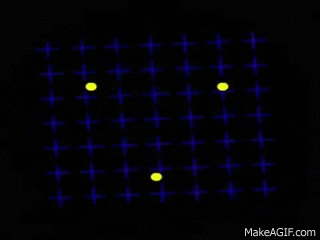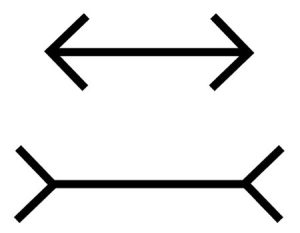Many online tests promise to reveal your personality or more with a couple of optical illusions. But can you really tell much about yourself or your vision with these images? How much do optical illusions truly reveal about you?
What optical illusions reveal about your personality
Previous experience and knowledge shape our perception. It is impossible to see the image of Jesus in toast, or Godzilla in the clouds, if you have never heard of Jesus or Godzilla. And common sense tells you that Forced Perspective illusions are wasted on babies under 5 months old. This is because they haven’t developed any depth perception yet. However, adult animals can be tricked by some illusions, because they do have experience with the world around them.
If you know how (where) optical illusions work, you will know that only 20% of the information processed in the Lateral geniculate nucleus comes from the visual system. The other 80% will come from the brainstem and cortex. This means that besides previous experience and knowledge, your mental state also heavily influences visual processing.
Optical illusions and mental illness
Some optical illusions work like mirrors and can show us more about ourselves in the same way as abstract art does. Other optical illusions can be used to predict a mental illness.
When people are not tricked by optical illusions and perceive visual information more accurately, it could suggest a cognitive deficit. It is due to a difference in the way people process information, with some depending more on information from the optical nerve, than from the cortex.
Resistance to illusions could be due to psychotic illnesses, medication, and even anxiety and depression disorders.
- Depressed patients perceive contrasts in images differently from non-depressed individuals. Visual illusions based on contrast are therefore perceived as weaker.
- Patients suffering from schizophrenia, for example, are less susceptible to visual illusions like the hollow mask illusion.

- People with high-functioning autistism often fail to process visual information in context. This means that they are less susceptible to illusions that have to do with orientation perception, such as the Shepard’s Tables.

- People with ADHD struggle with motion-induced blindness illusions. These are moving images, where you have to stare at a dot or + and surrounding objects seem to disappear.

- The loss of cognitive compensation in people with dementia can be shown with the Mueller-Lyer illusion. This illusion usually decreases with age (but increases in schizophrenics). However, patients with dementia show a significant increase compared to the schizophrenic control group.

Studying our visual perception and its limitations
We can use optical illusions to test visual processing. “Studying illusions can be helpful in understanding visual processing because they allow us to distinguish the mere sensation of physical object properties from the perceptual experience.”

This illusion evokes rays that seem to shimmer and ” illustrates how the brain ‘connects the dots’ to create a subjective reality […].”
